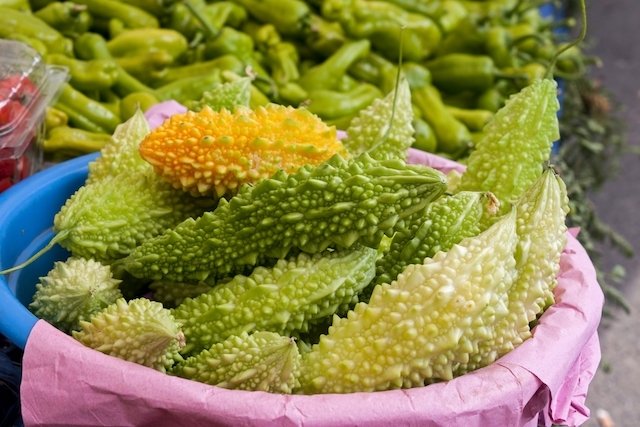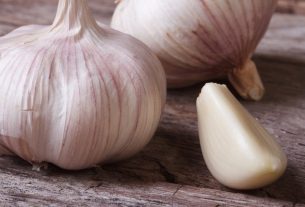São Caetano melon is a medicinal plant indicated to complement the treatment of some skin problems, such as insect bites, wounds or eczema, which is an inflammation of the skin caused by an allergy to some medication, fabrics or creams, for example. example. This is because it has healing and antimicrobial action.
Furthermore, this medicinal plant, also known as bitter melon, São Caetano herb, snake fruit and little melon, and whose scientific name is Momordica charantia, It also has a hypoglycemic action and can be recommended in the form of teas to complement the treatment of diabetes. See other teas to complement diabetes treatment.
São Caetano melon is generally found in local fairs and municipal markets, has a bitter taste and can be used in recipes, such as juice, stews and salads. Furthermore, the leaves of this plant can also be used to prepare teas and compresses, for example, or even found in capsule form.

What is São Caetano melon used for?
São Caetano melon is indicated for:
- Regulate blood sugar levels, therefore helping to treat diabetes;
- Help in the treatment of skin problems, such as wounds, lesions and eczema;
- Relieve insect bites;
- Help in the treatment of constipation.
São Caetano melon is also effective in the detoxification process, helping to eliminate toxins from the body through urine, feces or sweat, after prolonged use of medications or excess food, for example. See other suggestions to help detoxify the body.
Apparently, São Caetano melon has antiparasitic properties. However, more scientific studies are still needed to verify its effectiveness in humans, as studies have mainly been carried out on animals.
Main properties
São Caetano melon has healing, anti-rheumatic, hypoglycemic, antibiotic, antiviral, antidiabetic, astringent, purifying, insecticidal, laxative and purgative properties.
This is because it has bioactive components such as alkaloids, charantina, flavonoids, glycosides, phenolics, tannins and terpenoids.
Additionally, this plant is rich in several saponins, including momordicin, momordin, momordicoside, karavilagenin, karaviloside and kuguacin, all of which contribute to its healing properties.
How to use
São Caetano melon can be consumed in preparations such as juices, pickles, salads or stews. Furthermore, the leaves of this plant are also used to prepare teas and compresses to be applied to the skin.
1. São Caetano melon tea
São Caetano melon tea can be recommended to complement the treatment of diabetes and to help combat worms, for example.
Ingredients
- 1 tablespoon of São Caetano melon leaves;
- 1 cup of boiling water.
Preparation mode
Place the São Caetano melon leaves in a cup of boiling water. Cover and let rest for 10 minutes. Strain and drink 2 to 3 cups per day, for a maximum of 8 weeks, as advised by your doctor or herbalist.
São Caetano melon tea can also be used in compresses to apply to skin with lesions, wounds, scabies or eczema.
2. São Caetano melon capsules
São Caetano melon can also be found in the form of capsules, in compounding pharmacies or natural product stores, prepared with the dry extract of this medicinal plant.
Doses may vary according to the amount of São Caetano melon in the composition of the capsules, and therefore their use should only be carried out under the guidance of a doctor or a professional with experience in medicinal plants, with individualized doses.
Possible side effects
Melon de São Caetano can cause side effects such as abdominal pain, stomach discomfort, gastric ulcer, abdominal pain, headache, vomiting, diarrhea, palpitation, nephritis or vaginal bleeding.
Furthermore, when consumed in the form of tea or capsules, São Caetano melon can greatly reduce the amount of sugar in the blood and cause hypoglycemia which can be perceived through symptoms such as tremor, weakness, cold sweat, pale skin, blurred vision, heart palpitations, chest pain, anxiety, mental confusion, difficulty speaking, drowsiness.
Hypoglycemia can almost always be controlled by immediately ingesting sugar or glucose. However, when severe hypoglycemia occurs, which can lead to symptoms such as seizures, fainting or even coma, medical help should be sought immediately or the nearest emergency room should the person experience these symptoms. See how first aid for hypoglycemia is performed.
Who shouldn’t use
São Caetano melon should not be used by pregnant women, as it can cause uterine contractions and miscarriage. This medicinal plant should also not be used by children, breastfeeding women, people with chronic diarrhea, hypoglycemia, liver problems or those who are deficient in the enzyme glucose-6-phosphate dehydrogenase (G6PD).
Furthermore, people who use insulin or medications to control diabetes, such as metformin or glibenclamide, for example, should consult a doctor before using melon-de-são-caetano, because this plant can interact with these medications, causing hypoglycemia. .
Therefore, it is advisable to consume São Caetano melon only under the recommendation of a doctor, or a specialist in the use of medicinal plants.

Sign up for our newsletter and stay up to date with exclusive news
that can transform your routine!
Warning: Undefined array key "title" in /home/storelat/public_html/wp-content/plugins/link-whisper-premium/templates/frontend/related-posts.php on line 12
Warning: Undefined array key "title_tag" in /home/storelat/public_html/wp-content/plugins/link-whisper-premium/templates/frontend/related-posts.php on line 13



